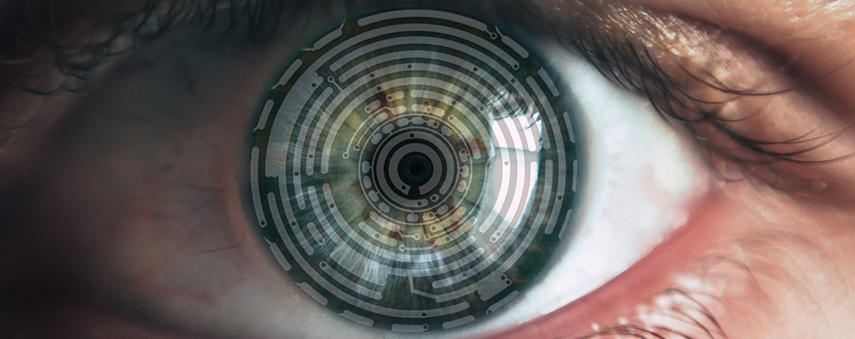Innovative wearable tech blurs the line between physical and digital spaces

Smart wearables are the next big consumer market. Innovation has staled as smartwatches become the dominant accessory. Now, companies set their sights on smart lenses.
According to industry analysts, the wearables market is set to be worth $25 billion by the end of this year, with smartwatches contributing $9 billion in sales.
Slim margins on smartphones are one driving force behind wearable tech, with manufacturers looking elsewhere to capitalise on another area of consumer growth.
However, the wearable tech market still remains one of highs and lows. High expectations for hotly anticipated groundbreaking products and the lowest of disappointments when those products fail to live up to what was promised… or fail to be released at all.
Success and failure for smart wearables
We’ve seen a raft of failed wearables. In some cases, it’s a shame that they didn’t make it to fruition. For others, it comes as no surprise to see that they didn’t catch on.
There was Kapture, the audio-recording wristband, which was launched and backed on Kickstarter. Kapture was designed to record one-minute bursts of audio, for those eureka moments when you just needed to put your thoughts into audio. It launched to immediate disappointment.

Users claimed that it was virtually inoperable and the interface was mostly unresponsive. Many had to bypass the device altogether to control it from the smartphone application. It perhaps would’ve been quicker to just use a stock voice notes app in the first place.

Then there was PULS. The brainchild of the musician will.i.am, PULS was set to take wearables to another level. Dubbed a “smart cuff” by its creator, it was intended to be both a new smartwatch and a smartphone. In reality, it offered nothing new or smart, failing to live up to expectations.
Many bemoaned its cumbersome, shackle-like construction and its clunky user interface. Typing was laborious, and many found the device difficult to navigate. Another wearable for the scrapheap, it would seem.
It’s not all failed products and undeserved hype, though. Many wearables have genuinely looked good, worked as intended, and have been designed with the best of intentions.
One niche in wearable tech which receives unrelenting hype for its future prospects is smart lenses.

Smart lenses promise to blur the line between the physical and digital spaces by using mixed reality (AR, VR and XR). By overlaying information, or augmenting what the user sees in front of them, smart lenses could find numerous practical uses.
A soldier could see tactical information or a video-game style heads up display (HUD) in front of them, assisting them in battle. Athletes could use the tech to see real-time biometrics. The police could use it for facial recognition or navigation. The prospective uses are staggering. One area, however, shows budding (but as yet unfulfilled) potential: the healthcare sector.
In 2014 Google teamed up with pharmaceutical company Novartis to develop their smart lens. The device, which looked just like a normal contact lens, aimed to assist people with eye problems and help patients with diabetes. An in-built sensor was developed to track blood sugar levels of the user through their tears, and through the smart lens’ tiny antenna data would be sent to the user’s smartphone.
Unfortunately, the project didn’t pan out as intended. New evidence suggested that tears aren’t as reliable as blood for measuring glucose levels so, like Google Glass, it was withdrawn.
What does the near future hold for wearables?
These near-misses still hint at the promise for future use, which might be sooner than we think. Our surgeons and doctors could one day be equipped with smart lenses, or we as patients might benefit from them directly. But consumers often drive development, and there is a hunger for devices which can be used in everyday life. Companies like Innovega have joined the foray into smart lens development with that in mind.
Their eMacula smart lens and glasses system seeks to eliminate the problems that often come with wearables; weight, size and complexity. Their self-professed “advanced retina technology” aims to deliver an “entertainment and information experience.”
Users can see their digital life projected before them; phone calls, news updates, social feeds and media. Just inside the lens of a normally functioning pair of glasses sits a small screen. Normally, the screen would be unviewable if not for the smart lenses. These adjust the user’s eyesight in order to see this augmented view. If eMacula is executed correctly then it will undoubtedly catch on with consumers, perhaps leading to further development for businesses and industry.

For every ‘hit’ there are many ‘misses’. However, each of these projects is developed further and expanded upon, leading to new technology and new advancements.
These teasing glimpses allow us to train a new focus on the future of the wearables market, to a time where there will be more successes than failures, and the vision of companies like Innovega become a reality.
What piece of wearable tech are you excited to see? Let us know on Facebook or Twitter.